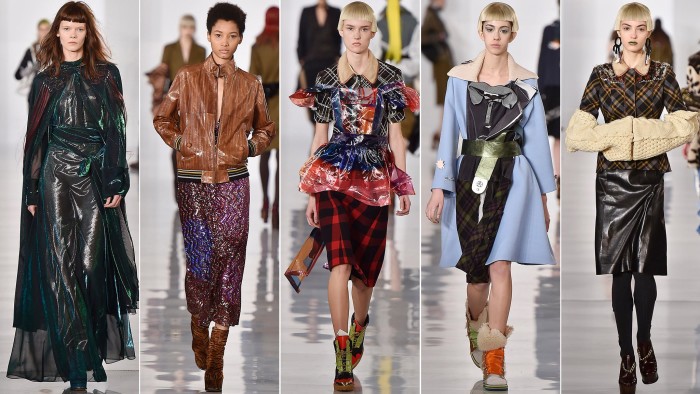Maison Margiela AW16 show report Paris Fashion Week

Roula Khalaf, Editor of the FT, selects her favourite stories in this weekly newsletter.
Paris Fashion Week has begun, and questions still hang over the industry as obstinately as the grey clouds that have dogged this fashion month in every city. Who will occupy the creative seat at Dior left empty by Raf Simons? Or at Lanvin, which lost Alber Elbaz, its designer of 14 years, in October, following a disagreement with its majority shareholder Shaw-Lan Wang, the Taiwanese media magnate who heads the investor group Harmonie SA. What are the plans for Chanel that forced the departure of Maureen Chiquet in January?
A Chanel announcement accredited the chief executive’s decision to leave the house she had headed since 2007 to “differences of opinion about strategic direction”. She has been replaced by its chairman, Alain Wertheimer, who owns the label along with his brother Gerard, part of the media-shy dynasty that has had a controlling interest in Chanel since 1928. Chiquet’s departure has opened a hive of intrigue as to what creative direction Chanel might take in the event of Karl Lagerfeld’s retirement — although talk of succession of the 82-year-old designer is powerfully dissuaded.
So many empty chairs, so few designers. At least Céline has called time on rumours around Phoebe Philo: the house released a statement in February insisting she is staying put.
Meanwhile, anticipation builds ahead of the Balenciaga show, at which the Kering group’s latest star hire Demna Gvasalia will unveil his first official collection since his appointment in October. The choice of the Georgia-born 34-year-old was a surprise in light of the fact his own label, Vetements (a collective of former Louis Vuitton and Maison Margiela atelier staff, which Gvasalia leads with his brother) was itself only launched in 2014. But its currency among the young, fashionable elite (who have ensured the brand’s £800 jeans and floral dresses have become sellout successes) is sky-high right now.
At Balenciaga, it is hoped Gvasalia will recapture the spirit of zeitgeisty surprise that was typical of Nicolas Ghesquière’s tenure until his departure in 2012. Gvasalia’s own Vetements show on Thursday, in an as yet “embargoed” location, will precede Balenciaga’s, which moves into a new morning slot on Sunday — and has seen most fashion critics being demoted to second row. How very . . . It’s a smoothly disruptive and typically inflammatory piece of scheduling: let’s hope it all delivers.
Meantime, that other great disrupter, John Galliano, continues to polish his accent (and profits) at Maison Margiela. According to the house’s owner Renzo Rosso last October, revenues have advanced by more than 30 per cent since the designer started in 2014. With plans for a fragrance in 2017 and a renewed focus on accessories, the pace of growth shows little sign of slowing.
The AW16 show continued to build on the principles of “found fashion”: reshaping garments as new hybrid offerings. The theme was “raw core”, with added “crystallisation”. The collection was shimmery, sparkly and surprising — though more sensible than shocking. “Our intent was to unleash the desirability of our evolving Margiela wardrobe with full force,” read the show notes, and the palette was rainbow-toned and playful.
An emerald-like Lurex gown looked like a mermaid on Oscars night; khaki military woollens were inset with white flock; a tweed suit was worn with Aran-knit gauntlets. One coat contained a polo-shirt that popped, Alien-style, from the chest. There were neat patchwork bags and jewel-encrusted bombers. The looks were cinched with giant belts, fastened at the back with buckles that gave a 1940s silhouette, or accessorised with collars, brooches and pearl necklaces. For all the blurring of sartorial boundaries, the collection was quite bourgeois and ladylike. How very controversial.
Photographs: Catwalking.com
Comments